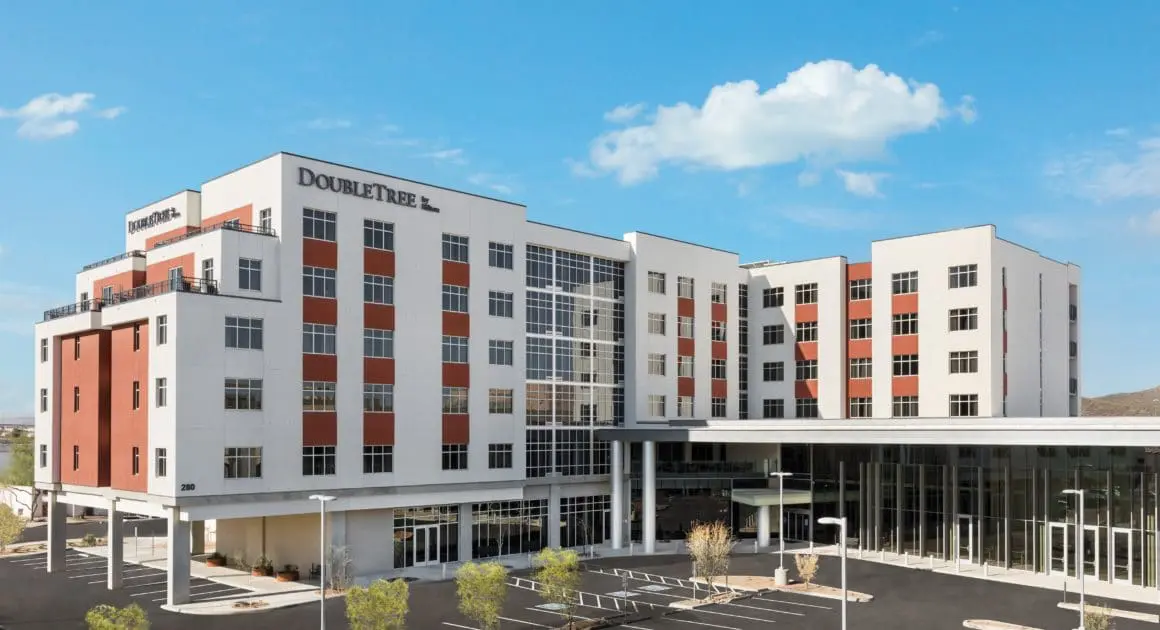If you enjoy golf, you’ve no doubt heard of hybrid clubs. Hybrid clubs mix the characteristics of woods – used for longer distance shots off the tee – and irons – used for shorter approach shots – to produce a club that makes it easier to hit mid-range shots more accurately. These clubs have exploded in popularity over the last few years among golfers worldwide – more than half the professionals now carry at least one hybrid in their bag.
With hybrids, we blend two distinct things to get something new that better fits our needs – whether that’s making better golf shots, driving farther without using as much gasoline, or carrying the power of a desktop computer and a telephone in our hands. Optimally, hybrids offer the best of two worlds.
Preferred equity in real estate investing is a hybrid of debt and equity.
It seeks to offer investors more upside than debt without as much risk as equity. The capital stack, otherwise known as the liquidation schedule, is the best place to unpack preferred equity.
What does the capital stack in preferred equity mean?
It takes a lot of capital to participate in commercial real estate. The capital stack refers to the source and order that a sponsor repays to investors. Broadly, there are three positions in the capital stack: senior debt, preferred equity, and common equity.
The senior debt position is almost universally the bank lending the capital needed to purchase the property. These are often recognizable banks like Wells Fargo, JPMorgan Chase, Bank of America, and other banks that specialize in commercial real estate.
When we pay the mortgage on a property, we’re repaying the party in the senior debt position. They make money on the deal by charging interest on the loan. When the time comes to sell the property, the senior debt position gets paid first from the sale proceeds.
Preferred equity gets paid after senior debt but ahead of common equity. Like debt, preferred equity earns a fixed rate of return from all revenues or cash flow earned each month. Like equity, there’s the potential to profit if the project does well, known as an equity share or an equity kicker.
How closely preferred equity resembles debt or equity depends on the specific project. The sponsor structures the preferred equity to provide investors with balanced risk and return profile that aligns with the project. For example, a riskier renovation project may offer a higher equity kicker than income because the property needs to be renovated before making money. Alternatively, a stabilized property that needs more modest repairs may offer income immediately with a smaller equity kicker upon sale.
The common equity position is often occupied by the fund sponsor. This party finds the property, puts together the business plan, negotiates loan terms, and locates other investors to execute the plan. The common equity position gets paid last but benefits from any remaining cash flow, property appreciation, and tax benefits associated with owning real estate.
Are you interested in adding alternative real estate investments to your portfolio? Check out the assets that Caliber sponsors to learn more.
Example of preferred equity in action[1]
Suppose a fund sponsor identifies a 100-unit multi-family property that’s on the market for $5 million. During due diligence, we find the management team is charging $1,750 per month in rent per unit, but that only half the units are rented. That’s an average monthly rent of $875. A 50% occupancy isn’t enough to cover the mortgage, staff, and routine maintenance costs, meaning the property is losing money.
The physical characteristics of the property need to be refurbished as well, including new amenities and fixtures. However, the location is outstanding, and there are demand drivers based on the arrival of a major employer nearby. We believe that we can justify increased rent following a significant renovation that we estimate to cost $1.5 million.
So, we need $1 million to purchase the property (20% of $5 million) and another $1.5 million to complete renovations. A fund sponsor may look to structure an investment offering that splits costs with their investors 80/20: this means that the fund sponsor will cover 20% of the costs and raise the remaining 80% from outside investors.
The deal breaks down this way:
| Purchase | $5,000,000 |
| 20% Down Payment | $1,000,000 |
| Sponsor (20%) | $200,000 |
| Preferred Equity Investors (80%) | $800,000 |
| Renovations | $1,500,000 |
| Sponsor (20%) | $300,000 |
| Preferred Equity Investors (80%) | $1,200,000 |
| Loan | $4,000,000 |
The capital stack now looks like this:
| CAPITAL STACK | ||
| Priority | Position | Investment |
| Paid First | Senior Debt – Lender | $4,000,000 |
| Paid Second | Preferred Equity – Investors | $2,000,000 |
| Paid Last | Common Equity – Sponsor | $500,000 |
In this example, the property was losing money every year when it was acquired. We expect it to continue to lose money while renovating. However, we believe the upgraded units and proximity to the major employer will soon attract higher-income renters. As a result, we structure the offering to prioritize an equity kicker, alongside an 8% distribution of any profits. We expect the project to take five years to go full cycle (acquiring, renovating, and selling).
Five years later, the property has gone from losing money each year to turning a healthy profit. Occupancy is 90%, and the average rent has increased from $875 to $2,000. The fund sponsor then compensates its investors with 8% cash flow in years three to five in return for their patience during the renovation.
| Acquire | Year 1 | Year 2 | Year 3 | Year 4 | Year 5 | |
| Units | 100 | 100 | 100 | 100 | 100 | 100 |
| Avg Rent/mo. | $875 | $875 | $938 | $1,500 | $1,663 | $2,000 |
| Units Occupied | 50 | 50 | 50 | 75 | 80 | 90 |
| Rental Revenue/yr. | $525,000 | $525,000 | $562,500 | $1,350,000 | $1,596,000 | $2,160,000 |
| Mortgage/yr. | ($420,000) | ($420,000) | ($420,000) | ($420,000) | ($420,000) | ($420,000) |
| Staff (3 people) | ($175,000) | ($175,000) | ($175,000) | ($175,000) | ($175,000) | ($175,000) |
| Maintenance ($500/unit/yr.) | ($25,000) | ($25,000) | ($25,000) | ($37,500) | ($40,000) | ($45,000) |
| Profit | ($95,000) | ($95,000) | ($57,500) | $717,500 | $961,000 | $1,520,000 |
| Investor Income – 8% | $57,400 | $76,880 | $121,600 |
Additionally, the fund sponsor locates an institutional investor willing to pay $7.5 million for the stabilized property – a 50% increase over the purchase price. Based on the capital stack, we owe the lender $4 million, preferred equity investors $2 million, and the sponsor $500,000. That leaves $1 million left to split between the preferred equity investors and the sponsor; at 80/20, that’s $800,000 for the investors and $200,000 for the sponsor.
| Preferred Equity Investors Profit and Loss | |
| Total Invested | ($2,000,000) |
| Sale Proceeds | $2,000,000 |
| Cash flow | $255,880 |
| Equity Kicker | $800,000 |
| Profit | $1,055,880 |
Preferred equity investors walk away from the deal with over $1 million in profit to split amongst themselves.
Preferred Equity in Real Estate Takeaways
Preferred equity is a way for sponsors like Caliber to tackle riskier projects that can produce significant upside potential for sponsors and investors alike. In exchange for funding, investors receiving a combination of cash flow from profits, an equity kicker upon sale, and sit higher in the capital stack. Also, preferred equity investors join as limited partners, which shields you from suffering losses beyond your investment amount.
Preferred equity is a hybrid of debt and equity designed to provide investors a way to align their risk and return tolerance to the project offered by the sponsor. Like the hybrid clubs, the right preferred equity structure depends on the individual investor. However, it’s a popular option for investors of all sizes and experiences to gain exposure to real estate.
The sponsor is responsible for structuring the offering and, in many cases, also plays the role of developer/general partner on the project. It helps to work with an experienced team with a track record of success spanning multiple market cycles.

About Caliber
As the Wealth Development Company, we are a leading U.S. sponsor with approximately $500 million in assets under development and management. These investments are comprised of alternative investments, which include private funds and syndications, externally managed real estate investment trusts (REITs) as well as public funds. We conduct substantially all business through our Sponsor, CaliberCos Inc., a vertically integrated platform that is strengthened by more than 70 professionals with decades of institutional experience in commercial real estate, capital markets, alternative investments, and mergers and acquisitions.
We allocate our alternative investment strategies and align them with investors’ investment objectives, risk profiles and liquidity preferences to offer an optimal balance of risk-adjusted returns and attractive investment performance. It is because of this thoughtful, intentional approach, and our unwavering pursuit of performance, that we have been deemed The Wealth Development Company.
We strive to build wealth for investors by offering a diverse host of investment solutions that fit our investors’ needs. With a primary focus on key middle-market growth areas, such as Arizona, Colorado, Nevada, Texas, Utah and Alaska, we evaluate other U.S. markets that possess the same attractive demographics and macroeconomic trends as our targeted markets, such as highly skilled labor, emerging population and job growth. In addition, we utilize our institutional full-service operating platform to generate operating efficiencies while enhancing the value of our investments through dedicated asset management strategies.
We create value through a combination of internal and external growth channels. Bringing together the benefits of real estate, deep asset-class, and capital markets expertise across public and private investments. We seed, develop, and manage a broad range of liquid and illiquid alternative strategies for a diverse group of investors who comprise approximately a $4 trillion alternative investment market, which includes high net worth, accredited and qualified investors, as well as family offices and smaller institutions. This strategy allows us to opportunistically compete in an evolving middle-market arena for alternative investments that range between $5 million and $50 million.
Click here to see Caliber’s current property portfolio.
If you would like to speak to someone about diversifying your retirement accounts, contact us at [email protected] or call (480) 295-7600 to schedule a call with a member of our Wealth Development Team.
